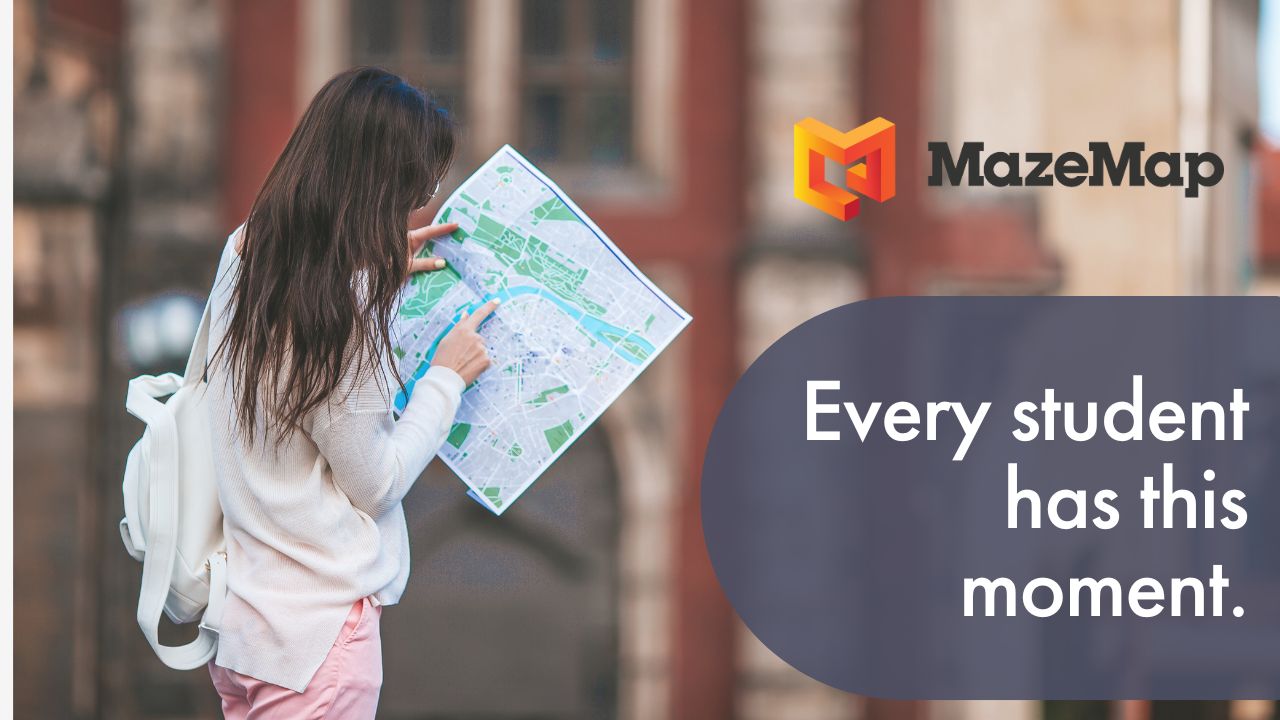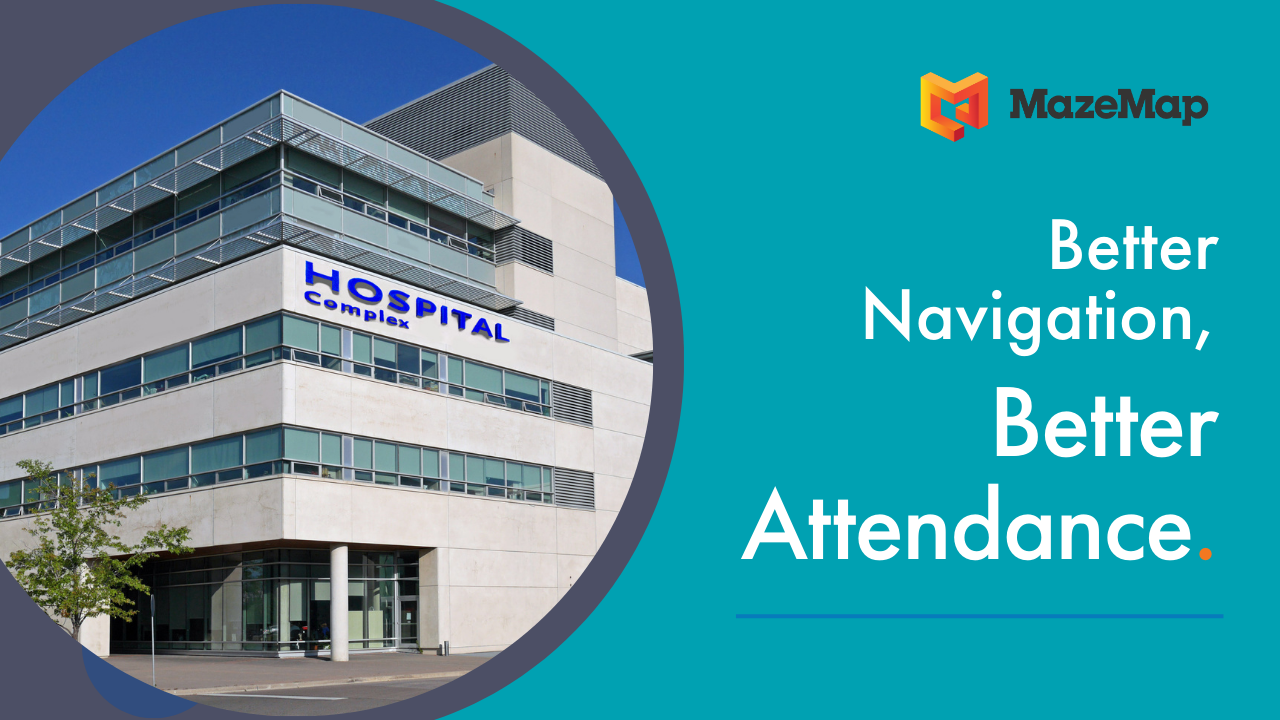BY VEGARD FLADBY
The terms indoor positioning and indoor navigation (IPIN) are in the wind these days. It sounds fancy having an indoor positioning system, but how do you actually benefit from investing in an indoor wayfinding platform like MazeMap?
The indoor maps are the foundation on which we place our extra features. As a client, it’s up to you whether you want to invest in only our interactive, searchable, and linkable maps, or add any other features or solutions on top. Let’s have a look at how these indoor mapping solutions help you, and your visitors, on a day-to-day basis.
1. Effortless Navigation
One of the clearest perks of using IPIN technologies comes in the form of time-saving and stress reduction. How many times have you had a doctor’s appointment, or a client meeting, and had no idea where to go? Here at MazeMap, we know that finding your way can be quite troublesome, and we want to simplify the process. That’s why indoor wayfinding using indoor maps is our bread and butter.

Eliminating stress and reducing time spent finding your way are just some of the benefits that indoor wayfinding solutions bring to the table. Another solution we provide is asset tracking using a Real-Time Location Service (RTLS), which allows users to find important assets quickly and be given the quickest route to that location. This is mainly used within hospitals, but can be used for almost anything you'd want.
2. Reduce the amount of wasted resource usage
Whether it be desks, meeting rooms, conference rooms, or other resources, having an organized way of presenting booked and available resources will have a large impact on the effectiveness of your office utilization. To reduce the cost of under-utilized resources, we recommend looking into MazeMap’s Space Booking solution. This allows for visualization of meeting rooms, spaces, and desks on our indoor map, and color code the rooms accordingly. These bookings are integrated directly with Google and Outlook calendars, or even a university timetabling system!

The great thing here is that we’re also able to stop “false” bookings. This means that you can configure the room settings to free up a booked room or desk if it is left idle for X amount of time. Allowing others to occupy the room instead and increasing the utilization of that room.
UPDATE: We've now also developed the possibility of detecting whether or not the person booking a particular desk has showed up or not. Read more about that in our most recent blog post.
3. Reduce costs
Money’s going out the window if no one ever shows up to their appointments. We’ve done our own study at a hospital here in Trondheim, Norway, showing that giving wayfinding options and navigation to visitors a day in advance saves up to 1.5 million USD in costs yearly. Moreover, meeting and conference rooms cost companies around 382$ per square meter annually (based on US numbers). If we look at an example; one 30 sq.m. meeting room being empty 50% of the time because of ghost bookings results in 5730$ in annual costs tied to the underutilization of that room.
Now that’s just one room, imagine multiplying this cost by 10, 35, or 100. That’s when the costs really start to add up. By implementing our Space Booking universities, hospitals, and offices can cut their costs tied to under-performing spaces substantially.
.png)
4. Inclusiveness
Navigating large campuses or office spaces can be challenging for anyone. Especially so for those with visual and hearing disabilities. That’s where we come in. MazeMap seeks to provide everyone with a seamless navigating experience, and therefore provide solutions for both those with visual and hearing impairments through our Accessible Navigation features.
Being WCAG 2.2 AA certified means that we satisfy international Web Content Accessibility Guidelines, and provide alternative routes avoiding obstacles, audio navigation as well as high contrast modes. MazeMap puts inclusiveness first with our indoor wayfinding.
Benefits of alternative routes:
- Reduces the stress of finding the right room for wheelchair users and users who are unable to use the stairs
- Reduces instances of missed appointments or classes
- Map owners have the freedom to add and edit accessible paths
- More cost-effective than physical signage for those with visual impairments
Benefits of audio navigation:
- Easy to use, industry-standard screen reading (voiceover), and swipe functions.
- High contrast screen mode to make on-screen directions easier to see -
- Little-to-no maintenance
- Provides mobility and independence to users, allowing them to navigate buildings without a guide
Summary
In short, indoor maps allow you to utilize your building’s potential to the max. This comes in the form of reduced costs, increased facilities usage, time-saving, reduced amounts of wasted resources, and a general increase in quality of life. Moreover, dynamic digital indoor maps will help you stand out from the crowd when your clients are faced with a choice of which solution to pick. Based on our references, and external research, indoor wayfinding solutions help organizations save tons of money and time, that would quite quickly pay for the implementation of the services - making them effectively free of charge.
Are you curious about how you can implement indoor maps in your building to increase inclusiveness and optimize space usage? Contact us, or book a demo today, and we’ll sort out all of your questions.











